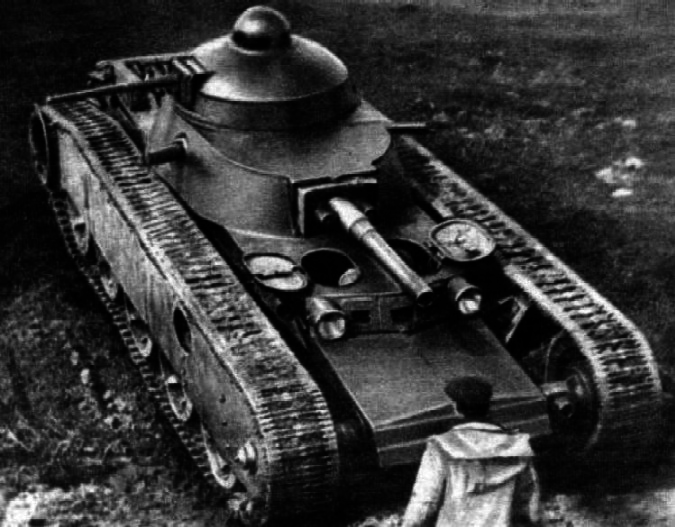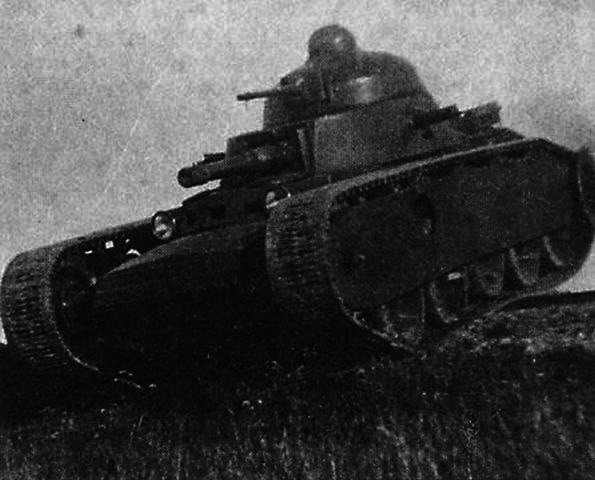Unusual tanks of Russia and the USSR. Tank TG 1931 g

The TG project was developed in a specially created design bureau ABO-5 of the Bolshevik plant. According to the idea of E. Grote, according to the learned technical assignment, this should be a tank weighing no more than 18 tons, capable of traveling with a speed of at least 30 km per hour, highly maneuverable, well armed and protected by a katana with 20-35 mm anti-ballistic armor. In April 1931, a prototype machine was built and already in July was submitted for testing, which lasted more than two months. Having shown good speed results, 34 km per hour, high maneuverability and maneuverability, the Grote tank thanks to the reverse mechanism and a six-speed gearbox had the ability to move back and forth at the same speed. The shielded chassis of the machine consisted of five rubberized rollers of large diameter, equipped with an individual coil spring and a brake mechanism. Six support rollers, guide and rear (with drive wheel gear installed inside it) on board. Caterpillar tracks were made by hot stamping and had a high durability. In the stern of the armored hull was placed a V-shaped 12-cylinder aviation engine M-6 carburetor type with a capacity of 305 hp The armored hull of the car was completely welded, size: length 7,5 m, width 3,1 m, height 2,84 m, of rolled armored plates with an inclined installation, the armor was: forehead - 44 mm, side - 24 mm, feed - 20 mm.
The armament deployment scheme was three-tiered, the first tier of armament consisted of two 7,62-mm tank guns DT-29, installed in ball bearings and housed in the onboard body armor plates. The second tier included an 76,2-mm joint design P.N. Syachentov and E. Grote and three 7,62-mm machine guns of the Maxim system, also installed in ball bearings and housed in a tall underbog box. The third tier - one 37-mm PS-1 gun mounted in a rotating turret, which had a large angle of vertical guidance, which allowed firing at air targets.
To monitor the progress of the battle, a commander's cupola was installed on the roof of the rotating turret, equipped with a tank periscope.

1931 year. TG on trial
In general, the car had a favorable impression on the members of the commission; however, a number of significant shortcomings were identified, one of which was a small space, the close position of the crew made it impossible to simultaneously fire cannons and machine guns. It was noted poor cooling of the engine, which led to its rapid overheating. The unfortunate location of the gearbox and side clutches made it difficult to access these nodes for repairs in the event of a breakdown. October 4 1931 was ordered to thoroughly examine and study the “Grotto tank” in depth. After examining the car carefully, the commission concluded: "Tank Grote considered an experimental model." However, not only the technical shortcomings of the machine were the reason for the refusal to adopt it and launch into the series. Among other things, the complexity of the design in the production affected, which made the car very expensive, its cost exceeded 1 500 000 rubles. Soon all the work on the TG project was discontinued, engineer E. Grote began to develop new projects for the creation of TG-4 and TG-5 heavy tanks. However, the experience gained by Soviet engineers and designers who worked together with German colleagues, was later successfully applied in the following projects.
Information